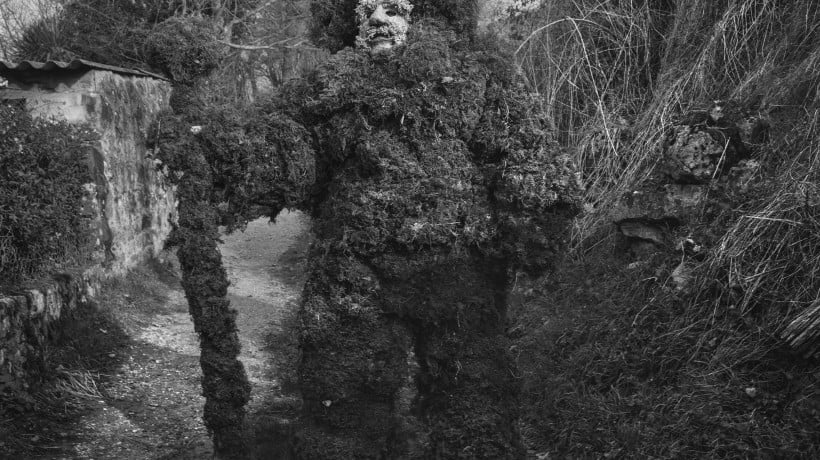Yannick Cormier
The figures are essentially ambiguous, at the crossroads of nature and culture.
Description
Bio
PDF
Close
In many parts of Europe and especially in the Iberian Peninsula (Spain, Portugal, and the Basque Country), archaic and mysterious figures regularly haunt carnival rites since the Middle Ages (but referring, according to some specialists like A. Darpeix, member of the historical and archaeological society of Perigord, to a distant shamanic and Neolithic antiquity). They are masks adorned with skins of animals, vegetables, and straw, surrounded by bells and bones, often crowned with horns and pieces of wood. Thus arises the wild man within modern paganism to symbolize the rebirth of nature emerging from winter. The figures are essentially ambiguous, at the crossroads of nature and culture. The masks always speak of the mysteries of existence: in traditional societies, they were or still are the figures of ancestors and spirits of the dead, that of protective or evil spirits.
Yannick Cormier was born in 1975 in France. In 1999, he joined the studio Astre in Paris. During this period, he worked as an assistant for Patrick Swirc, William Klein, and many others for magazines such as Vogue and Vanity Fair. Then, he began a career as a documentary photographer and his images have been published in various international magazines (OjodePez Libération, The Sunday Guardian, The Hindu, CNN, etc.). In 2018, he moved to France after 15 years spent in India. The photographer reveals a form of resistance of cultural identity by traditional societies or smaller communities who have not yet been completely anaesthetised by the modern consumerist world. It is an attempt to glimpse at the mythical attitudes of these groups. But more than myths, these images show people playing with the symbols of a culture that is at ease with its traditions and can hence be self-mocking.
Projects in PDF format are available only to members subscribed to all PDFs ( Membrana PDF
).
DOWNLOAD PDF:
